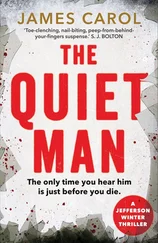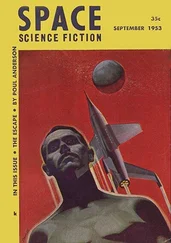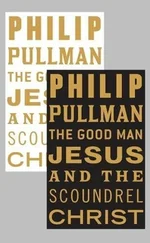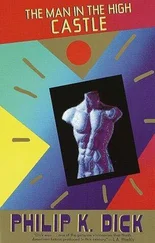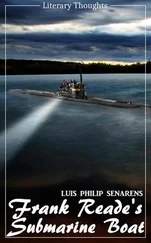Again, by pure happenstance, a detective who knew Pat Kane and the case he’d been working on did recognize the children: they were Barbara Deppner’s kids. Danny Deppner had been found. Pat Kane was soon notified. He hurried over to the medical examiner’s office and quickly confirmed that the children in the photos were the Deppners’. Barbara Deppner was brought over, and she verified that the wallet and the photos were Danny’s.
“I told you! I told you!” she kept saying.
The cause of death, Kane was first told, was strangulation, though there were no signs of a struggle, and a little digested meal of burned beans was still in Deppner’s stomach, indicating, in Kane’s mind, that he, like Gary Smith, had been poisoned and strangled. Then, however, Kane was informed that Danny had been shot in the head.
For Pat Kane this verified what he’d been saying and thinking all along, but his superiors still —incredibly—weren’t persuaded, and a very frustrated Pat Kane was just about ready to bang his head against a wall.
Who could blame him? To work off his frustrations Kane beat a heavy bag he had set up in his basement. He went for long, arduous runs. What would have to happen, he wondered, asked out loud, for his bosses to see the light, to understand that there was a cunning, remorseless serial killer roaming free, murdering at will, when and where and how the hell he pleased?
Richard was concerned about Robert Pronge. He was beginning to think Pronge was truly crazy, completely out of touch with reality. The beginning of the end of their relationship came when Pronge asked Richard to murder his wife and eight-year-old son. As remorseless a killer as Richard surely was, he would not kill a woman or a child. For him that was anathema, an unspeakable infamy, and he told Pronge just that. This created a chasm of sorts between the two men, and Richard was concerned. He had come to know Pronge as a raging psychopath and he was thinking Pronge might very well kill him for refusing to murder his wife and child—for judging him.
The second issue that drove a stake between the two men was Pronge’s plan to poison with ricin a small reservoir that acted as drinking water for an upstate community. Pronge said a man would pay him several hundred thousand dollars to do the job, which was to kill a particular family that used the water from this reservoir. The problem was many other households used the water, and Pronge’s plan would kill hundreds of innocents, women and children. This truly incensed Richard, who made up his mind to stop Pronge.
In mid-August, Richard walked in rubber-soled shoes to the garage where Pronge kept his Mister Softee truck. Pronge had actually laid gravel on the ground so it would be difficult for someone to walk on it without making noise, but Richard used his catlike abilities and silently made his way right up to the truck. Pronge was inside cleaning it up. Without a word, Richard shot him five times with a .22 pistol equipped with a silencer, killing him, and left him there like that, dead, in his Mister Softee truck. It seemed appropriate, Richard thought. Pronge never knew what hit him, who killed him, or even why.
After Pronge was discovered, Richard decided to get rid of the warehouse, to finally get rid of Masgay’s body. Richard now broke open the cement on top of the well head, retrieved Masgay’s body, took it to a little-used area in upstate New York, and left it there, wrapped in black leaf bags.
Again, by pure happenstance, the body was found within several days and the police were summoned. Interestingly, the frigid well water had completely preserved the corpse. Masgay had now been dead for two years but he looked as if he had just died—been murdered—only the day before. The clothes he was wearing were matched with missing-persons reports, and thus the authorities realized it was Louis Masgay, reported missing so long ago.
On the day Masgay disappeared, the police knew, he’d gone to see Richard Kuklinski with ninety thousand dollars cash money on him. When word of this discovery reached Detective Kane, he hurried and told Lieutenant Leck. The lieutenant said: “Pat… Pat, you’ve made a believer out of me,” and he shook Kane’s hand. This murder finally vindicated Kane, and he felt ten feet tall.
Now with Leck’s permission and encouragement, Kane dug deeper and quickly learned that Louis Masgay was last seen on his way to have dinner with Kuklinski the day he vanished. Kane also learned that Masgay had been buying porn and blank tapes from Kuklinski. Kane now turned his attention back to the murder of George Malliband, spoke to his brother Gene, and heard how Malliband was a heavy gambler, deep in debt to loan sharks and “Mafia characters.”
Kane went for a long jog, thinking this out, trying to fit the jagged pieces of this bloody puzzle together. He had many good ideas while running, managed to see things in a new light— from different angles, as he says. While jogging he had the idea to contact the NYPD organized-crime unit and see if he could learn something more about Richard Kuklinski from them. He needed help, he knew. He was only a lowly detective in the small state police barracks at Newton, New Jersey, which had an absolute minimum of resources—a serious disadvantage, and Pat Kane had the good sense to know it. Kane’s query to the NYPD proved to be fruitful. He not only asked about Kuklinski, but he provided the OC Unit with Kuklinski’s mug shot; it was shown to a Mafia informant—Freddie DiNome—and Kane soon learned that the photo was of “the Polack,” a proficient hit man who had worked with Roy DeMeo, who himself had recently been killed. “He is supposed to be,” an NYPD detective told Kane, “a specialist at getting rid of bodies.”
This confirmed what Kane had all along suspected, but to hear it from the NYPD OC Unit was very sobering. It sent shivers up his spine.
How many people has he killed? Kane wondered, and his mind played over the long list of Mafia hits that occurred all over New Jersey. With this new information, Kane became even more concerned for both his and his family’s safety. If Kuklinski was a contract killer, what was to prevent him from coming after Kane, or his wife, or for that matter his children? Kane made sure to find out the license-plate numbers of not only all of Richard’s cars, but his family’s cars as well. With the information he took Terry aside and explained how he was on the trail of a dangerous killer, a contract murderer, who lived nearby, a ten-minute drive away, and he “might,” he said, come around looking to hurt him. This both troubled and confused Terry.
“Why,” she asked, “would he come after you, Patrick, and not one of the other guys?”
“Because I’ve been pursuing him for a while, and I think… well, I think it’s possible he found out about me.”
“You, I mean just you?”
“Yes.”
“Why?”
“Terry, it’s long and involved. Just suffice it to say that I’m… I’m concerned, and I want you to be…”
“To be what, Patrick?”
“On guard—alert,” he said. “Keep your eyes open.”
“What about the children, Patrick? Would he… you know, hurt them?” she asked.
“Terry, I just want you to keep your eyes open, that’s all. No. No, he won’t hurt the children,” Kane said, but in truth he didn’t know what Richard would do, what Richard was capable of.
Merrick Kuklinski’s boyfriend, Richie Peterson, was becoming abusive. He first took to pushing Merrick around, then striking her and breaking things. As much as Merrick loved Peterson, she was not, she vowed, going to enter into an abusive relationship the way her mother had. So she unapologetically, irrevocably ended all romantic relations and ties with Peterson. He was heartbroken, crestfallen, pursued Merrick, begged her to reconsider, promised he’d change, but she didn’t want to hear it.
Читать дальше

